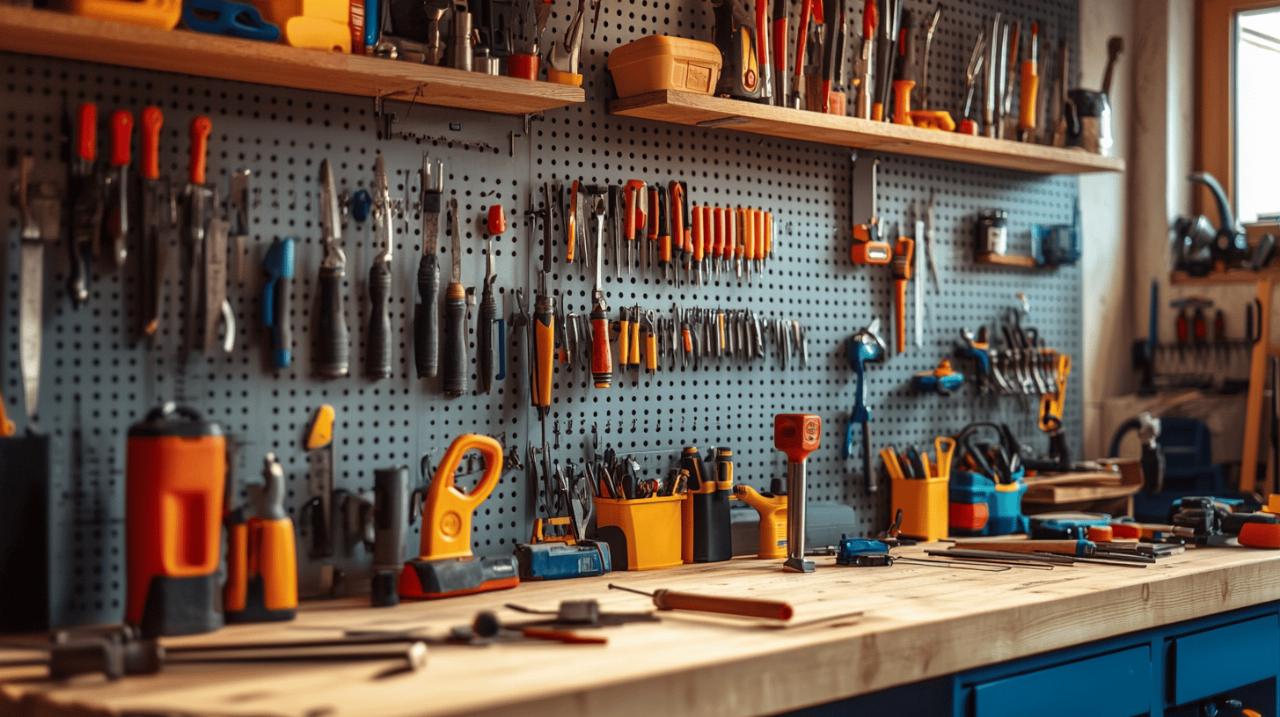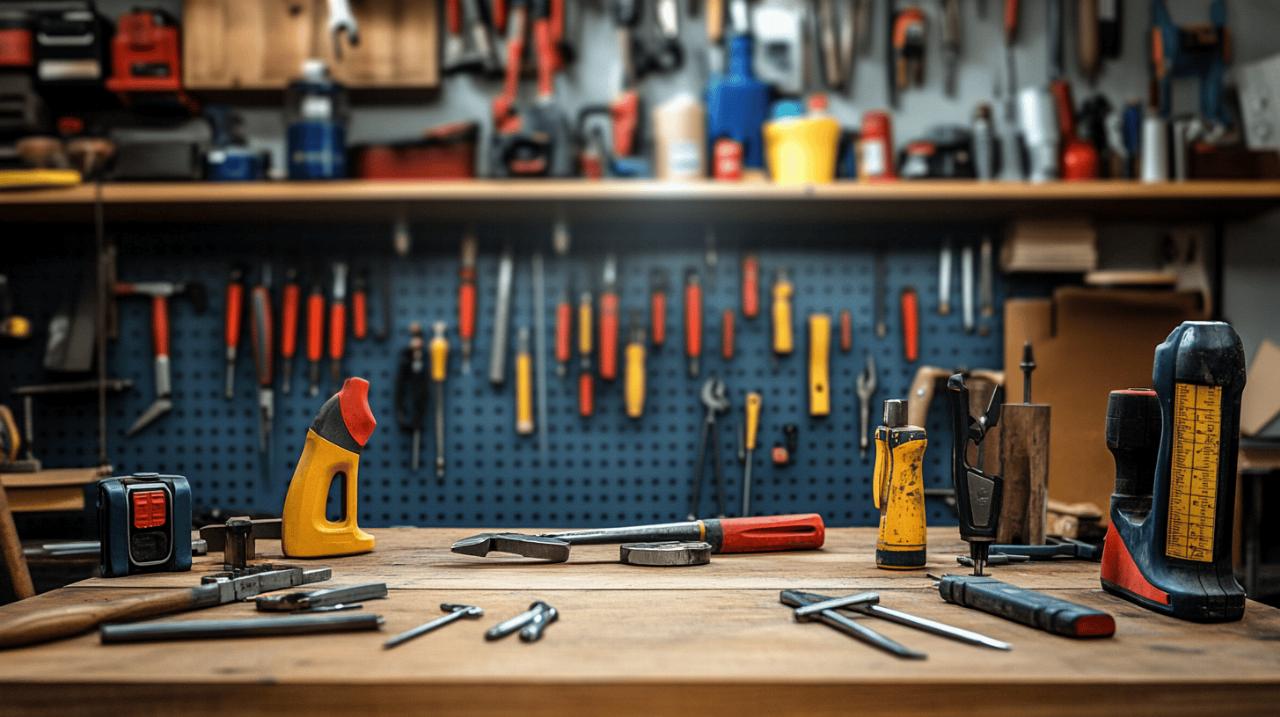Embarking on electrical work in your home can feel daunting, yet with the proper equipment and a cautious approach, many domestic projects are well within reach for a competent DIY enthusiast. Whether you're looking to install new lighting, fit additional sockets, or undertake a more ambitious renovation, having a well-considered toolkit is essential. This guide will walk you through the fundamental equipment needed, from hand tools to power drills, and highlight the safety measures that must never be overlooked. Understanding what you truly need, and how to use it correctly, will not only make your projects run more smoothly but also ensure you work safely and to a high standard.
Essential hand tools every electrician needs for domestic projects
When it comes to electrical work, hand tools form the backbone of any toolkit. These are the instruments you will reach for time and again, whether you are preparing cables, making connections, or testing circuits. Investing in quality hand tools is not merely about convenience; it is about precision, reliability, and ultimately, safety. While power tools may grab the headlines, the humble hand tool remains indispensable for detailed and controlled work. Building a solid collection of these essentials should be your first priority, as they will serve you across a wide variety of tasks throughout your DIY projects.
Wire strippers, cutters and crimping tools: your core kit
A capable wire stripper is a must-have for anyone working with electrical cables. This tool allows you to remove insulation cleanly and accurately without damaging the conductor beneath, which is critical for making secure connections. Look for a model with adjustable settings to accommodate different wire gauges, ensuring versatility across various tasks. Alongside this, a sturdy pair of wire cutters will enable you to trim cables to length with precision. These cutters should have sharp, hardened blades to make clean cuts through copper conductors, which helps to prevent fraying and ensures a neat finish. Crimping tools are equally important when you need to attach terminals or connectors to wires. A quality crimper applies consistent pressure, creating a secure mechanical and electrical bond that will stand the test of time. Together, these three tools form the core of your electrical hand tool kit, and choosing reliable brands will make a noticeable difference in both ease of use and the quality of your finished work.
Testers and multimeters: ensuring safe electrical work
Safety in electrical work hinges on your ability to verify whether a circuit is live before you begin any task. Voltage testers and multimeters are your primary allies in this regard. A simple voltage tester can quickly confirm the presence or absence of electrical current, giving you confidence that it is safe to proceed. For more detailed diagnostics, a multimeter is invaluable. This versatile instrument measures voltage, current, and resistance, allowing you to troubleshoot circuits, check continuity, and identify faults. Modern multimeters often come with additional features such as capacitance testing and diode checks, which can prove useful for more complex projects. When selecting a multimeter, consider one with a clear display, robust construction, and appropriate safety ratings for domestic electrical work. Circuit finders are another specialised tool that can save time when tracing cables or identifying specific circuits within a consumer unit. Thermal imaging cameras, though more advanced, can help detect hotspots and overloaded circuits, offering an extra layer of insight for those tackling larger renovations. Prioritising these testing and diagnostic tools will enable you to work with greater confidence and significantly reduce the risk of accidents.
Power Tools for Electrical Installation and Renovation Work
While hand tools are essential for fine work, power tools bring speed and efficiency to the more demanding aspects of electrical installation and renovation. Whether you are drilling through joists, cutting channels in walls, or driving multiple screws, the right power tool can transform a laborious task into a straightforward one. The choice between cordless and corded models is a key consideration. Cordless tools offer unmatched flexibility and freedom of movement, which is especially useful when working in spaces without convenient access to a power outlet. However, battery life and torque settings are important factors to weigh. On the other hand, corded tools provide consistent power and eliminate concerns about running out of charge mid-task. Understanding the strengths and limitations of each type will help you make informed decisions that suit your specific needs and working environment.
Cordless Drills and Impact Drivers for Cable Routing
A cordless drill is arguably the most versatile power tool in any DIY arsenal. For electrical work, it is indispensable when drilling holes through timber joists, studs, or masonry to route cables. Look for a model with variable speed control and adjustable torque settings, as these features allow you to tailor the tool's performance to the material you are working with. Brushless motors are becoming increasingly popular, offering longer run times and greater efficiency compared to traditional brushed motors. Brands such as Makita, DeWalt, Bosch, and Milwaukee have built strong reputations for producing durable and reliable cordless drills that can withstand the rigours of regular use. When choosing drill bits, select carbide-tipped masonry bits for concrete and brick, and high-speed steel bits for wood and metal. An impact driver, though often confused with a standard drill, is designed primarily for driving screws and bolts with high torque. Its rapid rotational bursts make it easier to drive long screws into dense materials without stripping the heads or fatiguing your wrist. For electrical projects that involve fitting back boxes, mounting consumer units, or securing conduit, an impact driver can be a real time-saver and a valuable addition to your toolkit.
Angle Grinders and Chasing Tools for Channelling Walls
When installing new circuits or upgrading existing ones, you may need to cut channels into walls to conceal cables. An angle grinder fitted with a diamond blade is a powerful tool for cutting through masonry and plaster with speed and precision. It is particularly useful for creating straight, clean slots that can later be filled and finished to a high standard. However, angle grinders generate a considerable amount of dust and debris, so it is essential to work in a well-ventilated area and use appropriate dust extraction equipment. Wet and dry vacuums are highly effective for managing the mess, capturing fine particles that would otherwise settle throughout your home. For more controlled and precise channelling, dedicated wall chasing tools are available. These machines typically feature two parallel blades that cut both sides of the channel simultaneously, along with an integrated dust extraction system. While they represent a larger investment, they offer superior accuracy and significantly reduce clean-up time. Whether you opt for an angle grinder or a purpose-built chasing tool, always ensure you are aware of the location of existing cables and pipes before cutting into walls. A cable and pipe detector is a worthwhile investment to avoid costly and dangerous mistakes.
Safety Equipment and Protective Gear for Electrical DIY
 No matter how skilled or experienced you are, working with electricity always carries inherent risks. Proper safety equipment and protective gear are not optional extras; they are fundamental requirements that protect you from injury and potentially life-threatening hazards. Electrical shocks, arc flashes, and accidental damage to live circuits can have serious consequences, so it is vital to take every precaution. Beyond the tools themselves, your personal safety depends on the quality and suitability of your protective equipment. Investing in the right gear demonstrates a professional attitude and ensures that you can carry out your projects with confidence and peace of mind.
No matter how skilled or experienced you are, working with electricity always carries inherent risks. Proper safety equipment and protective gear are not optional extras; they are fundamental requirements that protect you from injury and potentially life-threatening hazards. Electrical shocks, arc flashes, and accidental damage to live circuits can have serious consequences, so it is vital to take every precaution. Beyond the tools themselves, your personal safety depends on the quality and suitability of your protective equipment. Investing in the right gear demonstrates a professional attitude and ensures that you can carry out your projects with confidence and peace of mind.
Insulated tools and voltage detection devices
Insulated tools are specifically designed to protect you from electric shock when working on or near live circuits. These tools feature handles coated with non-conductive materials that have been tested and rated to withstand certain voltages. When purchasing insulated tools, look for those that comply with relevant safety standards and are clearly marked with their voltage rating. Screwdrivers, pliers, and wire cutters are commonly available in insulated versions, and they are essential if you ever need to work on live installations. However, it is always preferable to isolate circuits before beginning work, even when using insulated tools. Voltage detection devices, such as non-contact voltage testers, provide an additional layer of safety by allowing you to confirm that a circuit is dead before touching any components. These devices emit an audible or visual alert when they detect voltage, making them quick and convenient to use. Some advanced models also offer adjustable sensitivity and torch functions, which can be helpful in dimly lit spaces. By combining insulated tools with reliable voltage detection devices, you create a robust safety system that minimises the risk of accidental contact with live conductors.
Personal protective equipment: gloves, eyewear and footwear
Personal protective equipment, or PPE, is your first line of defence against a range of hazards. Safety goggles or glasses are essential when drilling, cutting, or grinding, as they protect your eyes from flying debris, dust, and sparks. Choose eyewear that fits comfortably and provides a good seal around your eyes to prevent particles from entering from the sides. Insulated gloves are another critical item, particularly when there is any possibility of contact with live parts. These gloves are rated for specific voltage levels and should be inspected regularly for signs of wear or damage. In addition to protecting your hands from electric shock, gloves also shield your skin from cuts, abrasions, and chemical exposure when working with adhesives or solvents. Footwear is often overlooked, yet it plays a vital role in your overall safety. Sturdy, non-conductive work boots with reinforced toe caps protect your feet from falling tools and provide insulation from the ground. If you are working in wet conditions or on conductive surfaces, wearing appropriate footwear can make a significant difference. Hearing protection is advisable when using noisy power tools such as angle grinders or hammer drills, as prolonged exposure to high noise levels can cause permanent hearing damage. Finally, wearing suitable clothing that is close-fitting and free from loose cuffs or dangling accessories reduces the risk of entanglement in machinery. By equipping yourself with comprehensive PPE, you demonstrate a commitment to safe working practices and protect yourself from a wide range of potential hazards.
Selecting quality tools within your budget for electrical projects
Balancing cost and quality is one of the most common challenges faced by DIY enthusiasts. While it can be tempting to opt for the cheapest tools available, this approach often leads to frustration and additional expense in the long run. Low-quality tools are more likely to break, perform inconsistently, and may even pose safety risks. Conversely, investing in reputable brands and well-engineered products pays dividends in terms of reliability, durability, and ease of use. The key is to prioritise the tools you will use most frequently and to build your collection gradually, rather than trying to acquire everything at once. By taking a strategic approach, you can assemble a comprehensive toolkit that meets your needs without breaking the bank.
Balancing cost and reliability: which brands offer best value
When it comes to power tools and precision instruments, brand reputation matters. Manufacturers such as Makita, DeWalt, Bosch, and Milwaukee have earned their standing through decades of producing high-quality, dependable products. These brands typically offer extensive warranties, readily available spare parts, and excellent customer service, all of which add value beyond the initial purchase price. While their tools may carry a higher upfront cost, the long-term benefits in terms of performance and longevity often justify the investment. For example, a brushless cordless drill from a leading brand may cost more than a budget alternative, but it will likely deliver superior torque, longer battery life, and greater durability. This is particularly important for power tools, where consistent performance and reliability are critical. That said, not every tool in your kit needs to be from a premium brand. For items you will use infrequently, mid-range or budget options can offer acceptable performance at a lower price. The key is to research reviews, compare specifications, and consider the warranty and support offered by the manufacturer. Online forums, trade websites, and customer reviews can provide valuable insights into which brands offer the best value for money. Remember that a tool is only a good investment if it meets your specific needs and is built to last. Spending a little extra on a well-engineered product will often save you money and frustration in the long term.
Building your toolkit gradually: priority purchases and storage solutions
Rather than attempting to buy everything at once, take a phased approach to building your toolkit. Start with the essentials that you will need for your immediate projects, such as a cordless drill, wire strippers, a voltage tester, and a basic set of screwdrivers. As you gain experience and take on more complex tasks, you can gradually add specialised tools such as circuit finders, thermal imaging cameras, or advanced multimeters. This strategy not only spreads the cost over time but also allows you to learn which tools are genuinely useful and worth the investment. Proper storage is another important consideration. A well-organised tool box or storage system will protect your equipment from damage, make it easier to find what you need, and extend the lifespan of your tools. Tool boxes with removable trays and compartments are ideal for separating hand tools from accessories such as drill bits and saw blades. Wall-mounted storage solutions, such as pegboards or magnetic strips, can keep frequently used items within easy reach while maximising workspace. For cordless tools, consider investing in extra battery packs and a multi-bay charger, as having spare batteries on hand ensures you can work uninterrupted. Regularly maintaining your tools by cleaning them, lubricating moving parts, and checking for wear will keep them in good working order and prevent costly repairs or replacements. Finally, keep an eye out for seasonal sales, bundle deals, and loyalty programmes offered by suppliers, as these can provide opportunities to acquire quality tools at reduced prices. By planning your purchases carefully and maintaining your equipment properly, you can build a professional-grade toolkit that serves you well for years to come.





